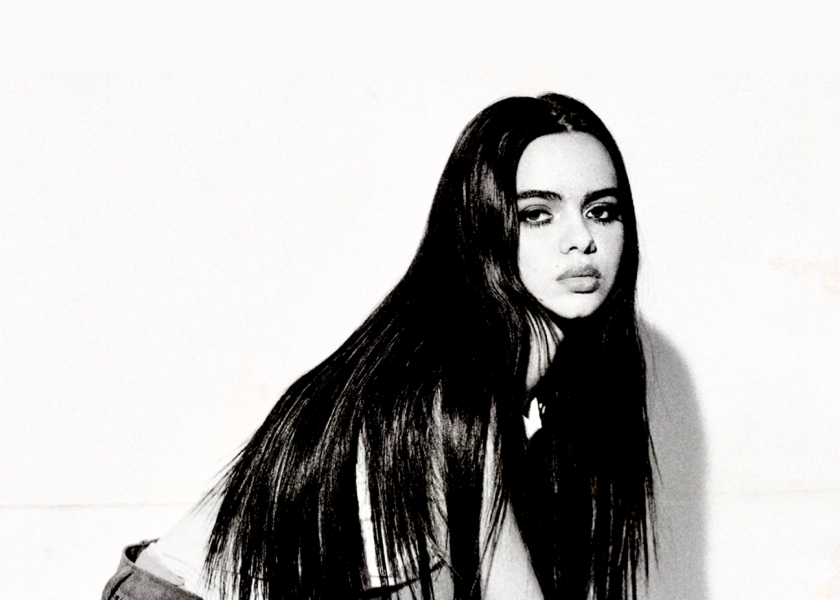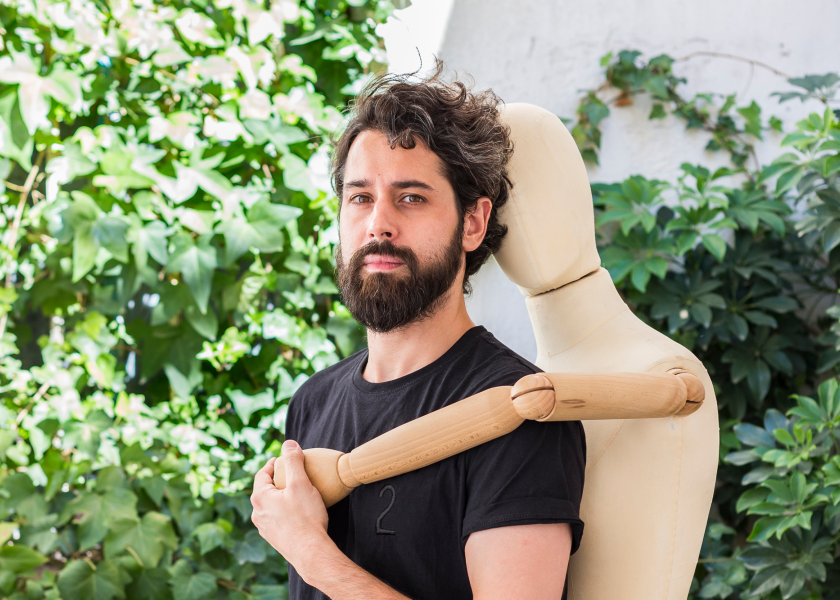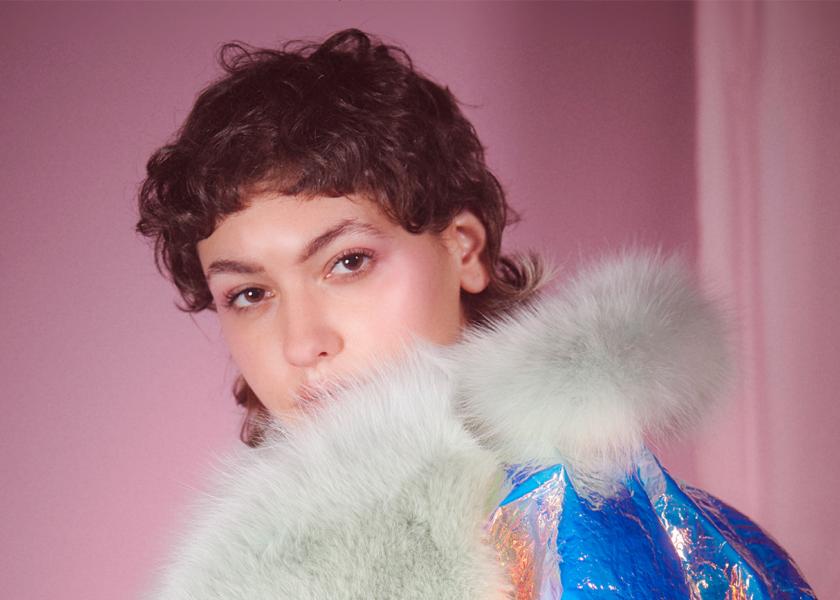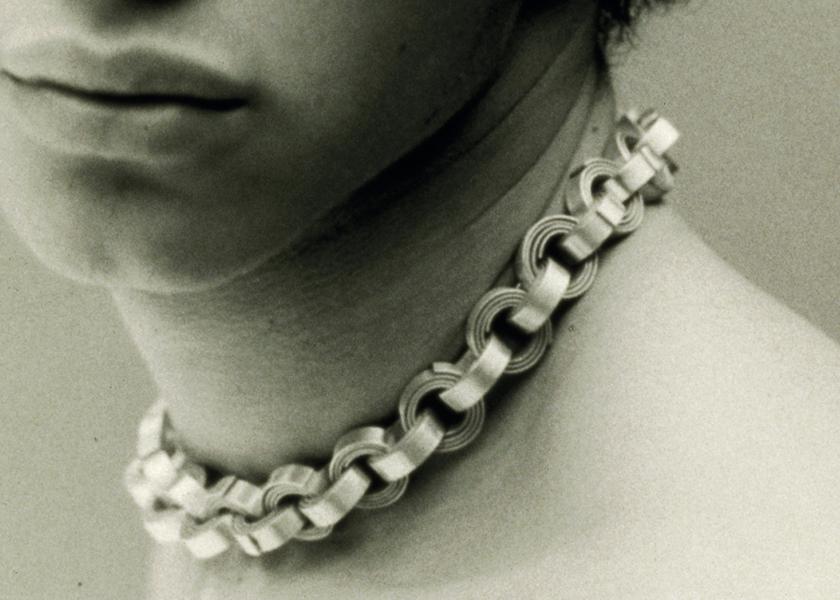Pepa Salazar
Empowerment, Sustainability and Anime
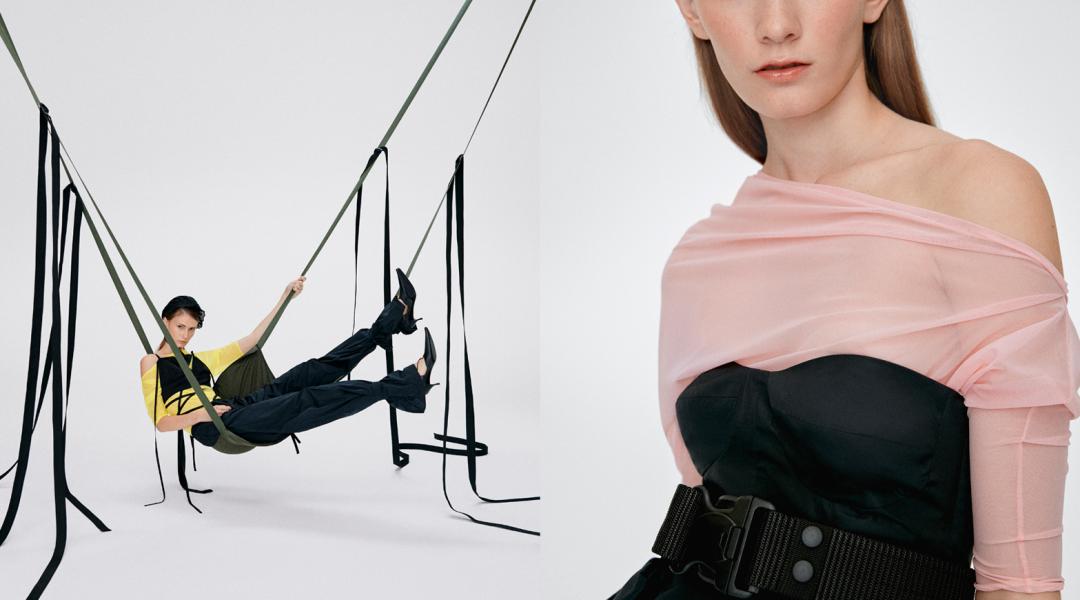
The Valencia-born designer claims there is life for fashion beyond aesthetics. A good example is to be found in her collections, which draw from the present to send a message of social transformation.
A Sutra swing serves to showcase the SS20 collection by Pepa Salazar (Valencia, 1990), one with a straightforward reference to the female sex. This is how she is showing her new designs on Instagram, among allusions to baroque sensuality and historical clothing to reflect on the old and the new, on what women were and what they are now. Staples of the 18th century wardrobe such as the corset are reimagined in functional nylon, styled with leggings and oversized garments. Salazar thus creates a conversation about art, style and feminism that, she says, aims to “transcend the superficiality of form.” But it just so happens that her asymmetrical, deconstructed shapes also appeal to people who care much about their looks, such as Kim Kardashian, who chose her designs for a fashion edit directed by Murcia-born influencer Sita Abellán.
However, garnering followers is not what this dressmaker passionate about pattern design is most interested about. Fashion matters because of its “ability to change things,” an idea that also informs a way to produce clothes that avoids squandering resources. “Right now, we want to be environmentally responsible, and the same goes with women," she explains. And she does so through a brand that was established almost on inertia, as fashion came to her overnight, by accident. “I had a lot of personal projects and a friend of mine encouraged me to show them. I decided to apply for the first edition of the Mercedes-Benz Fashion Week Madrid’s Pasarela EGO and I won the prize for best collection”.
There Pepa realized that what she was doing was working and became her own boss. Since then, she has applied technology to her designs, experimenting with hydroponic fabrics, and reimagined icons such as the Tous bear, giving it a kawaii look. Japanese culture in general, and manga in particular, influence her work. She is a staunch fan of anime: “I love Evangelion, Akira, which is ace, Ghost in the Shell and Satoshi Kon’s films like Millennium Actress and Perfect Blue.” Talent a bordo entered the universe of this millennial designer who has sometimes acknowledged she is more influenced by Bakalao music than by nineties pop.
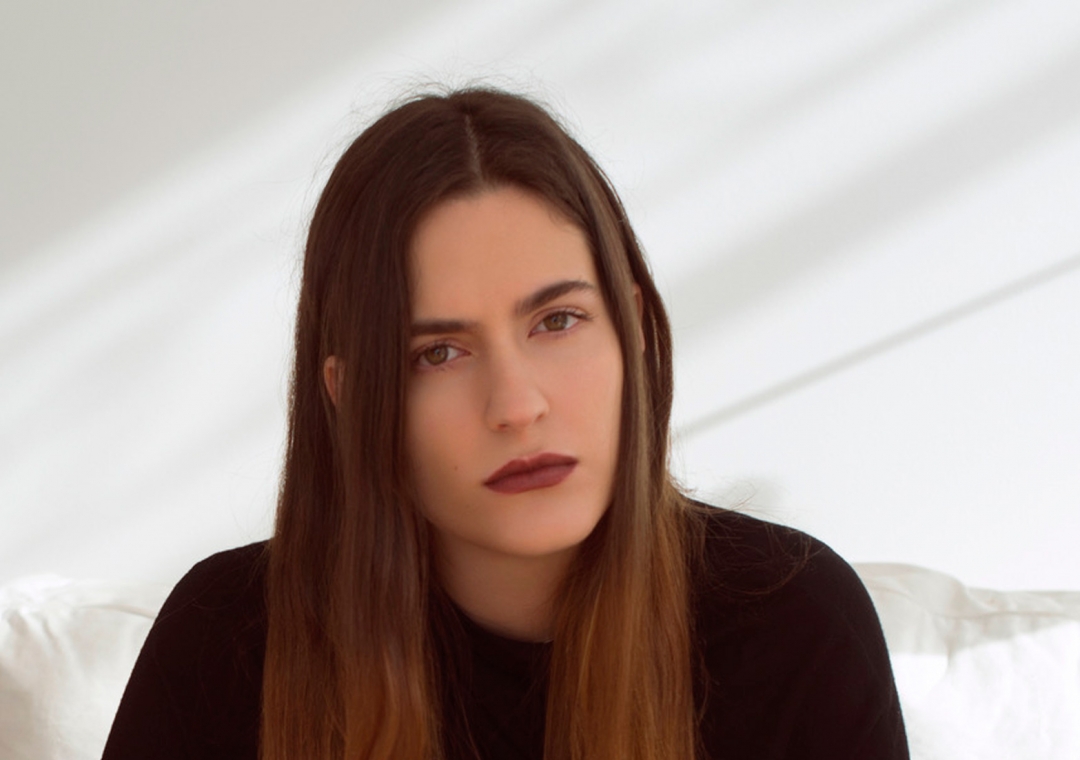
Pepa Salazar is a key name to understand new Spanish fashion. © Courtesy of Pelonio Press
Your collections have an avant-garde narrative, but in your new collection there are clear references to historical fashion. What inspired you to look to the past?
I was lucky enough to access the archives of Madrid’s Museo del Traje and was surprised to see what fashion was like in the 18th and 19th centuries. I started working with corsets and thinking about how to wear them now. In the process, we took radiographies of cotillas [French corsets made with whalebones sewn on canvas or silk] from that period. This collection also features underwear, something like the first type of panties. I’ve been working on the meaning of what the old and the new mean and the impact it has on women, not only as far as clothing goes, but also in terms of how our attitude has evolved.
The corset is one of the most significant pieces of your new collection. How did you conceptualise it?
Back then, women wearing corsets could hardly breathe. It is said that Poiret [stylist Paul Poiret] freed women from the corset, but at the same time he put shackles on their feet, since his skirts were so tight it was difficult to walk in them. But the modern corset has nothing to do with the old ones. It doesn’t squeeze the body -- it makes you feel good, it empowers you. We use a different structure and different fabrics. They come with pockets to make them much more utilitarian. They have a little bit of the functionality of sportswear, with a certain balance between design and practicality.
You have experience in sports fashion thanks to your collaboration with Nike to create accessories for the Women's Football World Cup. Was that a call to feminism in this area?
It was the first time that women's football was taking a new dimension, since games were going to be played in large stadiums for a greater impact. I had the chance to attend the first game and was impressed by the number of girls who suddenly had found in the players her female role models. Then the team members told me that their role models had always been men. I thought that was very important and I wanted to highlight it creating a discourse about women in sports. Being able to participate in that project was amazing.
Have you ever considered creating gear for them?
I’d love to, but it's complicated. For that collaboration we also made hair bands that could be worn together or separately. The design expressed the value of a team but also of the role of each individual player. I was told that the captains of the different teams get along very well, and I thought that was a good thing to emphasise through design.

Images of the new Pepa Salazar Spring / Summer 2020 collection.
Highlighting the camaraderie between women is important, since we have received the opposite message for a long time.
I believe fashion must commit to women but also to everything else. It must go hand in hand with society and raise complex issues and reflections. I think that’s essential. To that end, we must take advantage of all the opportunities that we have. Nowadays with climate change and all, we try to produce on demand to avoid large stocks and be more environmentally friendly. It’s about promoting a restrained, conscious consumption. I think it’s our duty to raise issues that affect everyone.
“Nowadays with climate change and all, we try to produce on demand to avoid large stocks and be more environmentally friendly”
In this crusade for the environment, have you avoid using any kind of fabric in particular?
We try to implement ecological processes within the capabilities of our small medium business. We use recycled packaging and we don’t produce useless stock. Overproducing is not the way to do things. We must take advantage of resources and materials. To create our accessories, we use factory leather scraps because they are extremely useful. In short, it’s about buying fewer and better-quality clothes and taking advantage of all the resources that we have.
You’ve said you’re a fan of anime. Is that one of your sources of inspiration?
Sometimes on my mood boards there’re many references to things about anime that I like, for example typography. My Tous collaboration was inspired by manga and by kawaii designs. Everything you like influences your work in some way. I also enjoy playing video games, so I suppose there’s something about them reflected in my designs.
Your upcoming collection features illustrations by artist Lorena Prain. How did this collaboration come about?
She’s a good friend of mine, we get along very well. I asked her to create an illustration for bags, scarves, and sweatshirts. I really like the way she draws animals that are kind of depressive. She has a knack for creating characters that seem very cute at first glance, but which actually have some darkness lurking in the background. This and other collaborations will be soon available on our newly relaunched online shop.
